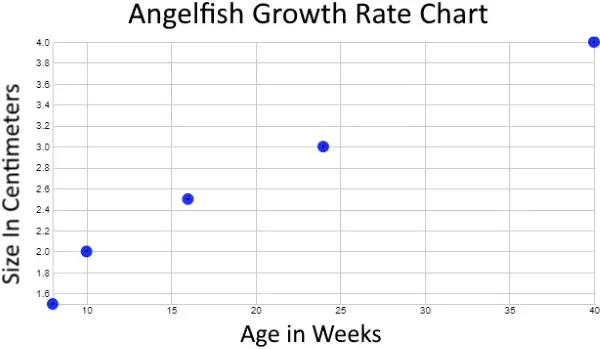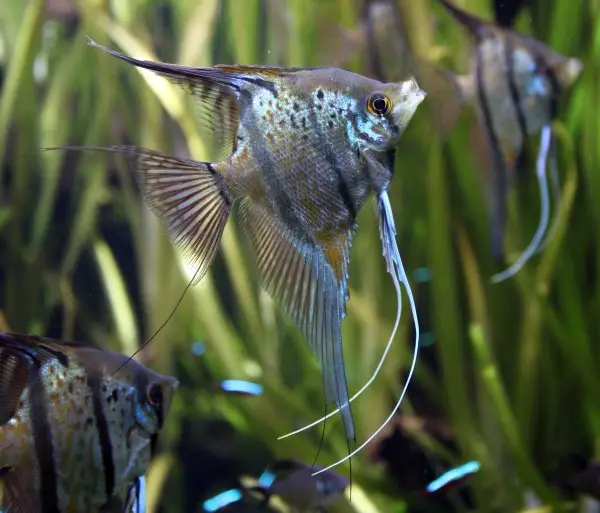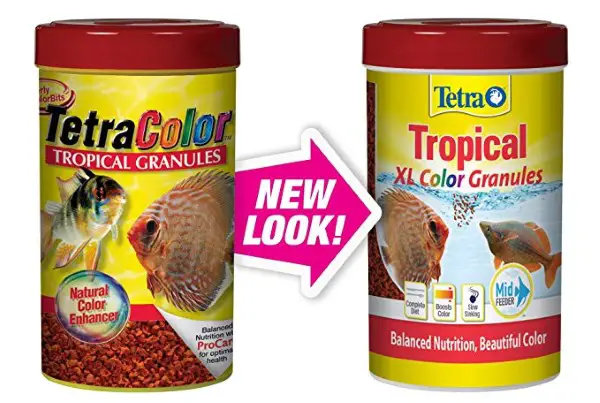Maybe you’re thinking about breeding angelfish? Or you might have some tiny ones for sale at the fish store? Well, in that case, you’ll be wondering what the angelfish growth rate is.
This article will cover how fast angelfish grow, what their maximum size is, and how to best achieve healthy, fast growing angelfish.
Disclaimer On Angelfish Growth Rate
It’s important to remember that, just like us humans, no two fish will grow at the same rate, nor will they reach the same final size. So, keep in mind that any numbers used in this piece are going to refer to the typical experience taken from angelfish breeders.
Angelfish Growth Rate – Some Numbers
In the right conditions, angelfish will grow fast. According to angelfish breeder “Tolak” via the fishfroums.net website, angelfish will reach dime size by 8-10, nickel by 12-16 weeks, quarter sized by 4 months and around the size of a silver dollar coin by 6 months!
While the majority of visitors to this website are from the US, I’ve put together a graph of those numbers with centimeters for my much appreciated worldwide audience!

Of course, angelfish can get much bigger than their 6 month age listed on this chart. However, at 6 months they’re generally considered adults. After reaching adulthood, angelfish will continue to grow, but it will be much, much slower. Their maximum length can be up to 6 inches. Reaching that size can take a number of years.
What Influences Angelfish Growth Rate?
I mentioned in the introduction that a number of factors can influence the size of your angelfish, and the speed at which they reach that size.
Water Changes And Clean Water
Let’s start with clean water. To me, this is the most important thing.
The lower you’re able to keep nitrogen levels in your aquarium, the better. This means keeping ammonia especially at virtually zero, same goes for nitrite. While nitrate is safer, you should also work to keep this number as small as you can. This means: lots of water changes.

https://commons.wikimedia.org/w/index.php?curid=31199216
Clean water and a good diet help you keep fast growing and healthy angelfish.
You can also use plants to help eat up the nitrogen compounds in your water. Personally, I like to use floating plants to do that. In my experience, they are some of the best nitrogen eaters out there.
Diet! Eat, Eat, Eat!
Your angelfish’s growth rate will be affected by what they eat, how much they eat, and how often they eat.
To get the feeding balance right, there are a few things you need to think about.
The first among them is: are we talking about fry or juveniles? Very young fish, i.e. fry, need very regular, very small feedings, and they need water changes to remove the waste created by feeding them so often.

Once fry are recognizable as angelfish, then we consider them juveniles. At this age, they become more hardy and it might be tempting to let up on the feeding regime and the water change regime. But, if you want your fish to continue to grow big and grow fast, then you really should continue feeding small amounts up to five times a day. And because of this intense feeding regime, water quality will still need to be carefully monitored.
In addition to regular food, it’s vitally important that the food you feed is high quality. Obviously you should be feeding things like live and frozen foods—i.e. baby brine, maybe daphnia, bloodworm—but I recommend picking a solid commercial food to provide the bulk of the nutrition.
In my opinion, Tetra’s color food is excellent. Lots of ornamental fish farms use it, and L. R. Bretz of YouTube is also a big proponent. You can grab it here from Amazon (affiliate link).
Check out this article on some of my favorite fish foods.
Genetics Will Influence Your Angelfish Growth Rate
And that’s just a fact. Some of the fancier strains of angelfish just tend to be smaller and slower growing and there’s not much you can do about it. By all means, give them the best diet, and give them the best water quality, because you want them to reach their maximum potential.
But, just don’t beat yourself up if your double dark black veil angelfish doesn’t reach the same size as a plain old silver angelfish. The closer to the wild type the strain is then the less inbred it will be, and therefore it’ll have an easier time obtaining a larger size.




